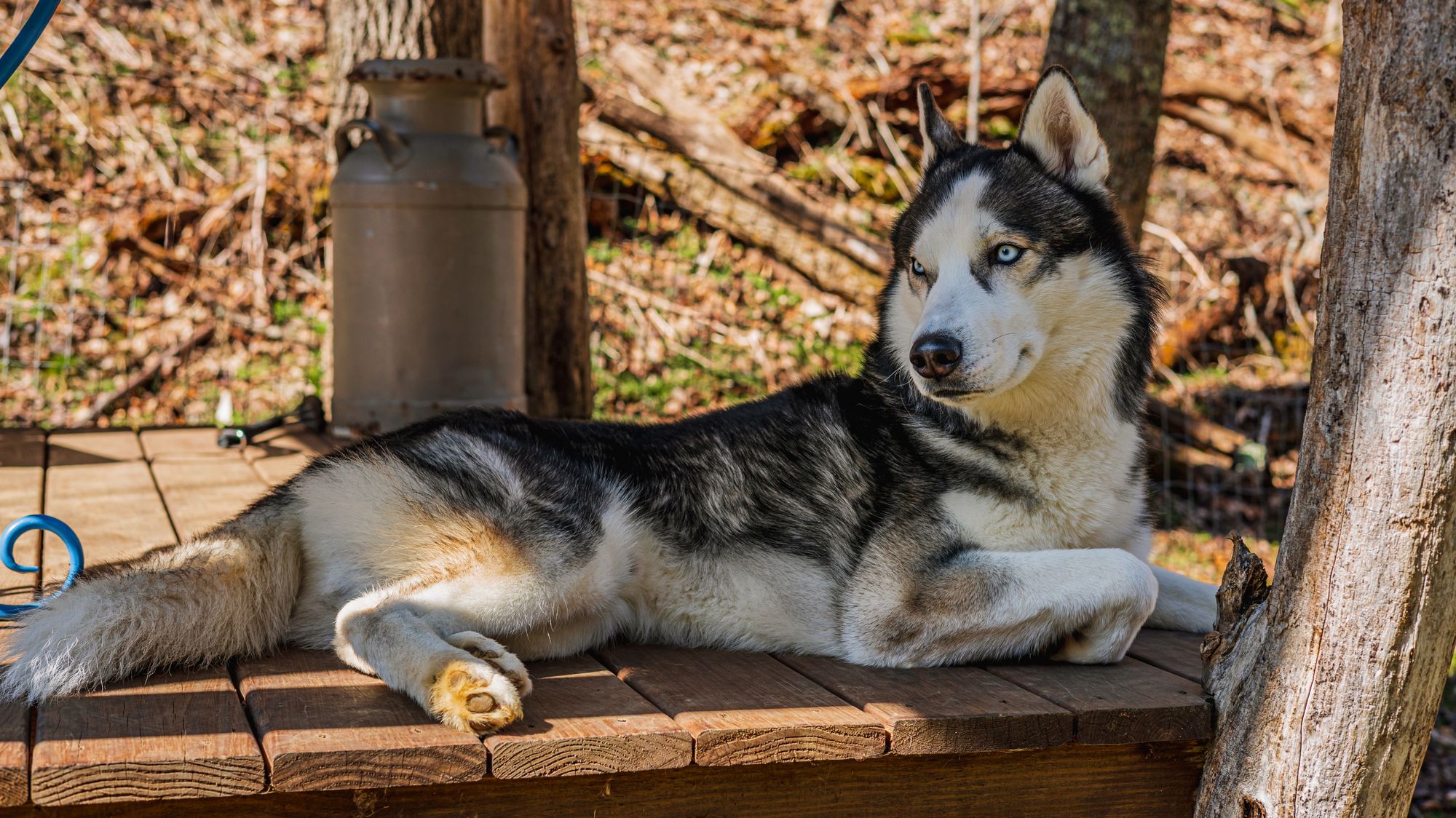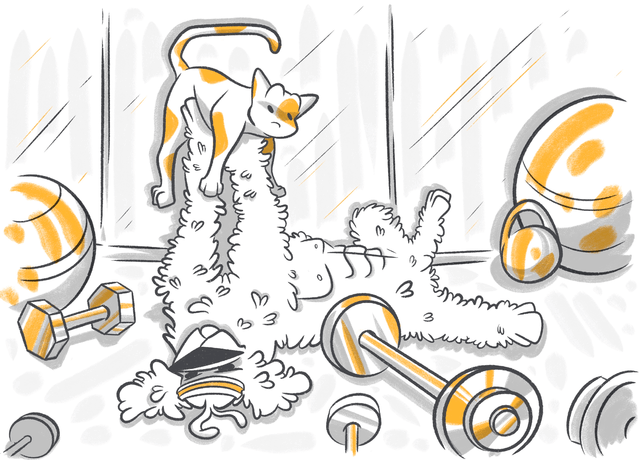When we bring home our furry companions for the first time, we accept responsibility for their health and wellbeing. A common health concern that affects dogs is muscle spasms.
Witnessing a dog's muscle spasm can be unsettling and distressing for both your dog and you. So it's best to arm yourself with a complete understanding of their causes and symptoms and how to treat muscle spasms in dogs. With this knowledge, you can provide appropriate care for your canine companion and seek timely veterinary intervention.
Read on to learn more about muscle spasms, their potential causes, signs, and symptoms to look out for, and the best approaches for managing and treating this condition.
Stop Googling - Ask a Real Vet
Content:
- What Are Muscle Spasms In Dogs
- Why Is My Dog Twitching In Their Sleep
- Does Your Dog Twitch Their Legs
- Causes of Muscle Spasms In Dogs
- Symptoms of Muscle Spasms In Dogs
- Treatment and Management of Muscle Spasms In Dogs
- Final Thoughts
- FAQs
What Are Muscle Spasms In Dogs
Muscle spasms are sudden, involuntary movements of the muscles. These muscle cramps or contractions can range from mild twitches to more severe, painful contractions that can be very uncomfortable and distressing for your dog.
According to PetMD study, spasms can occur in various muscle groups throughout your dog's body, and the severity and frequency can differ depending on the underlying cause.
Why Is My Dog Twitching In Their Sleep
While your sweet dog is asleep, twitches indicate they're in the later stages of sleep, known as REM sleep. REM stands for Rapid Eye Movement, and it’s during this type of sleep that you’ll notice your dog dreaming more. Twitching during this stage of sleep is completely normal and usually related to whatever they're dreaming about, and whimpers can sometimes accompany it.
Puppies and older dogs tend to twitch more in their sleep, and experts recommend not waking them.
Twitching that continues for longer than 30 seconds non-stop and presents with stiffer limbs and more violent movement is cause for concern. Your dog may have a seizure and should be seen by a vet immediately. In severe cases, seizures can be fatal, so it's best not to delay. In such cases, it's always good to have the peace of mind that comes with having an Emergency Fund to help you pay for any emergency treatments.
Does Your Dog Twitch Their Legs
If you notice that your dog's back legs are twitching, it could indicate several conditions. While it's most common in Doberman pinschers, twitching legs can affect any dog.
Symptoms like vomiting, foaming at the mouth, urinating, and pooping indicate a more serious seizure.
If you're concerned about your pup, consider investing in a pet camera to watch your best friend even when you're not home.
Causes of Muscle Spasms In Dogs
- Dehydration is one of dogs' most common causes of muscle spasms. Dehydration can lead to an electrolyte imbalance, which can cause muscle spasms.
- Overexertion is fairly common in more active breeds of dogs. After an intense period of physical activity without proper rest and hydration, they can often experience muscle spasms.
- Muscle strain can occur during play or exercise and result in spasms.
- Electrolyte imbalance refers to a lack of essential minerals like potassium, calcium, or magnesium that can cause irregular muscle contractions.
- Nerve irritation or compression can lead to muscle spasms when nerves traveling through and around muscles become irritated or compressed.
- Metabolic disorders like hyperthyroidism or hypothyroidism can contribute to muscle spasms.
- Toxicity or exposure to toxic substances can affect the nervous system, causing involuntary spasms.
- Injuries like fractures or muscle tears can cause muscle spasms as the body tries to heal and protect itself.
- Underlying medical conditions like myositis, myopathy, or neurological disease can cause muscle contractions.
- Aging.
Symptoms of Muscle Spasms In Dogs

- Visible muscle twitching or trembling: this can range from mild to severe.
- Lameness: your dog may avoid using the affected limb due to pain or discomfort.
- Muscle stiffness: affected muscles may become stiff and resist movement.
- Vocalization: your dog may whimper, whine, or even yelp in response to the discomfort or pain of a spasm.
- Abnormal posture: spasms can cause your dog to adopt an unusual posture or arch their back.
- Behavioral changes such as irritability or restlessness can indicate that your dog is in discomfort or pain.
- Reluctance to move: your dog may avoid any physical activity to minimize the pain or discomfort from a muscle spasm.
Treatment and Management of Muscle Spasms In Dogs
- Veterinary examination to determine the underlying cause.
- Hydration and electrolyte balance are important to help prevent spasms caused by dehydration and electrolyte imbalances.
- Rest is important, as overexertion can cause muscle spasms in dogs.
- Heat and massage help alleviate muscle tension and reduce spasming.
- Medications may be prescribed to manage discomfort. These would include muscle relaxants or pain medication. Never administer human medications to your dog. Always consult a vet first and administer any medication according to their directions.
- Physical therapy for dogs with underlying musculoskeletal conditions can assist with muscle strength, flexibility, and joint function.
- Addressing underlying medical conditions.
- Dietary supplements may be needed if mineral deficiencies are responsible for muscle spasms. Before adding a supplement to your pet’s diet, make sure to consult your veterinarian.
Final Thoughts
Dog muscle spasms can be distressing, but most cases can be effectively managed with proper care and early veterinary intervention. You're now armed with everything you need to know to tackle a muscle spasm in your dog like a pro, so you can return to making beautiful memories with your canine companion in no time.
FAQs

Is my dog having seizures or muscle spasms?
A good rule of thumb here is this: muscle spasms usually involve a specific area — one or two muscles that are having a moment — while a seizure will cause tremors throughout the body.
Seizures include other symptoms like confusion, foaming at the mouth or drooling excessively, incontinence, unconsciousness, and difficulty walking.
Why does my dog keep kicking his back leg when lying down?
If your dog is asleep but kicking out his back legs, this is likely an involuntary muscle spasm resulting from a dream or nightmare. Your dog is most likely in the stage of sleep known as REM, characterized by vivid dreaming.
Your dog's leg kicks may also be accompanied by twitches and even vocalizations like whining, whimpering, or soft little barks.
Why is my dog jerking every few seconds while awake?
Twitching is the result of a small, involuntary contraction of opposing muscle groups. Twitches are typically short, painless, sharp contractions, while a muscle spasm is more prolonged. Even while your dog is awake, these spasms are usually nothing to worry about. In senior dogs, this can be more common.
If these twitches last for a prolonged period, they can indicate something more serious, like a neurological disorder that will require veterinary care.
My dog is flinching and acting weird – what does this mean?
Flinching is different from twitches or spasms in that it is an instinctual reaction to an external stimulus. Your dog will likely flinch when it feels fear, surprise, or pain.
Flinching while sleeping is completely normal, but if it occurs during wakefulness, it can indicate a problem. Maybe your dog ate something bad or injured itself. In this case, it would be a good idea to head to the vet sooner rather than later to have it checked out.
What do muscle spasms look like in a dog?
If your dog has a muscle spasm, you'll notice movement or tension in one area of the body. If you touch the area, you will feel that the muscle underneath is hard or tight.
You may notice that the dog is less active and avoids using the affected limb. In some cases, you may even notice that your dog’s posture is different, perhaps with a more arched back.
What are some natural remedies for muscle spasms in dogs?
Start by giving your dog plenty of fluids to combat any possible dehydration causing the spasm. Then, if your dog allows it, gently massage or stretch the affected muscle. You can also try hot and cold therapy to lessen muscle spasms and alleviate discomfort.
If your dog has a spasm, it’s a good idea to avoid exercising or overexerting the affected limb until it’s better.
How long do dog muscle spasms last?
Muscle spasms in dogs can last from a few seconds to 15 minutes or longer and may recur until they are treated or the muscle heals. As with anything that potentially affects your dog’s health, it’s always best to consult a vet if you’re concerned or unsure.
Was this article helpful?
Help us make our articles even better









